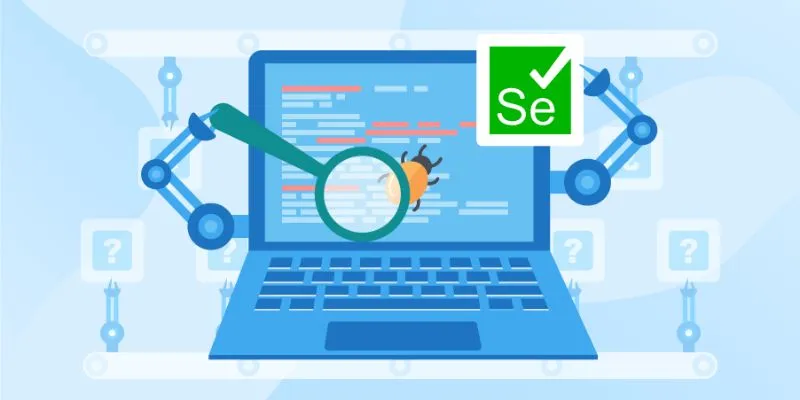
Behavior-Driven Development (BDD) is a software development tackle that encourages collaboration between web developers, testers, and business stakeholders. It focuses on defining the actions of a system through examples and scenarios written in a readable format. Selenium, a powerful tool for application testing, can be seamlessly integrated into BDD frameworks to enhance test automation and ensure that software meets its business requirements. In this blog, we’ll explore how Selenium can be integrated into popular BDD frameworks, the benefits of this integration, and practical steps to get started. Join the FITA Academy‘s Selenium Training in Chennai to learn more about Selenium Technology.
Understanding BDD Frameworks
BDD frameworks, such as Cucumber and SpecFlow, are designed to facilitate communication between technical and non-technical team members. These frameworks use plain language to describe system behavior, making it simpler to understand and validate requirements. The key components of BDD frameworks include:
- Feature Files: Written in Gherkin syntax, these files contain scenarios and examples that describe the expected behavior of the system.
- Step Definitions: Code that maps the steps in feature files to executable test code.
- Test Runner: Executes the scenarios and generates reports on test outcomes.
Integrating Selenium with BDD Frameworks
- Choosing a BDD Framework
The first step in integrating Selenium into a BDD framework is selecting the appropriate framework. Cucumber (for Java) and SpecFlow (for .NET) are two popular choices:
- Cucumber: Works well with various programming languages, including Java, Ruby, and JavaScript. It uses Gherkin syntax to define scenarios and is widely used in the testing community.
- SpecFlow: Designed for .NET applications, SpecFlow also uses Gherkin syntax and integrates seamlessly with Visual Studio.
- Setting Up the Environment
To integrate Selenium with a BDD framework, you need to set up the development environment:
- Install Required Tools: Download and install the BDD framework (e.g., Cucumber or SpecFlow) and Selenium WebDriver for your preferred programming language.
- Configure Dependencies: Add dependencies for Selenium and the BDD framework to your project. For example, in a Maven project, you would include the relevant dependencies in your pom.xml file.
- Writing Feature Files
Feature files are written in Gherkin syntax and describe the system’s behavior in a readable format. A typical features file might look like this:
Feature: Login Functionality
Scenario: Successful login with valid credentials
Given I am on the login page
When I enter valid username and password
And I click the login button
Then I should be redirected to the dashboard page
Enroll in the Best Selenium Online Training, Which will help you understand more Concepts about Selenium IDE Features.
- Implementing Step Definitions
Step definitions map the steps defined in the feature files to actual test code using Selenium WebDriver. For example, a step definitions for the “Given I am on the login page” step might look like this in Java with Cucumber:
java
Copy code
import org.openqa.selenium.WebDriver;
import org.openqa.selenium.chrome.ChromeDriver;
import io.cucumber.java.en.Given;
public class LoginSteps {
WebDriver driver;
@Given(“I am on the login page”)
public void i_am_on_the_login_page() {
driver = new ChromeDriver();
driver.get(“http://example.com/login”);
}
}
- Running Tests
With feature files and step definitions in place, you can run your BDD tests. Use the test runner provided by your BDD framework to execute the scenarios and generate reports on test results. For Cucumber, you would use the @CucumberOptions annotation to configure and run tests.
- Analyzing Results and Refining Tests
After running the tests, analyze the results to ensure that the application behaves as expected. Refine your feature files and step definitions as needed based on test outcomes and feedback from stakeholders.
Integrating Selenium into BDD frameworks like Cucumber or SpecFlow enhances test automation by aligning test scenarios with business requirements. This integration fosters better collaboration between technical and non-technical team members, ensuring that the software meets user expectations and performs as intended. By following the steps outlined in this blog, you can leverage the strengths of both Selenium and BDD frameworks to create robust and effective test suites. As you refine your approach, you’ll contribute to delivering high-quality software that satisfies both functional and business requirements. If you are interested in learning Selenium technology, join the Coaching Institute in Chennai. It provides you with advanced training with professional faculty. So that you can develop your career. Also, it provides you with a certificate and placement assistance.
Read more: Selenium Interview Questions and Answers
